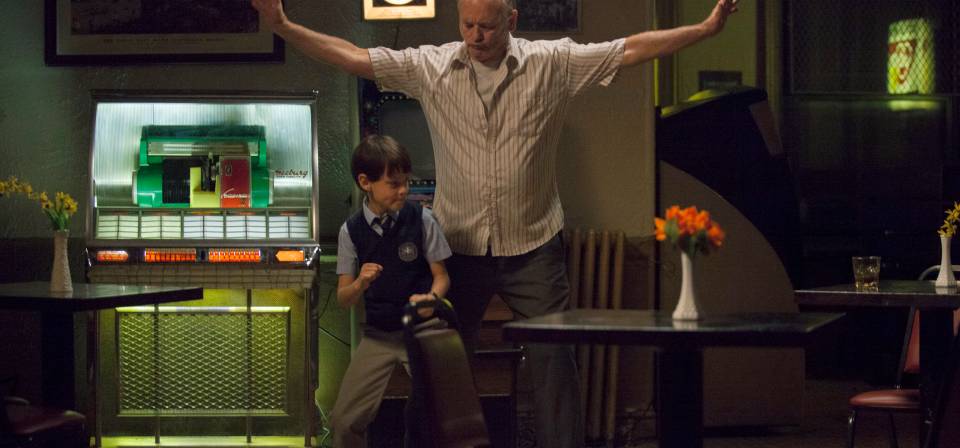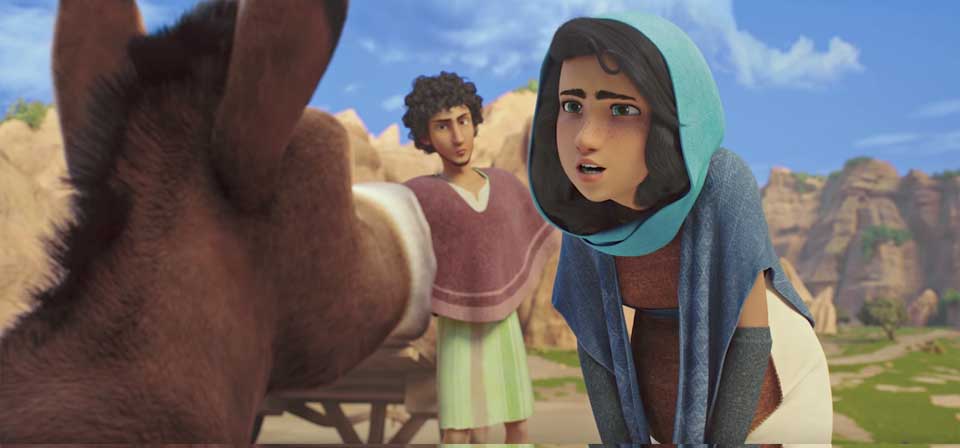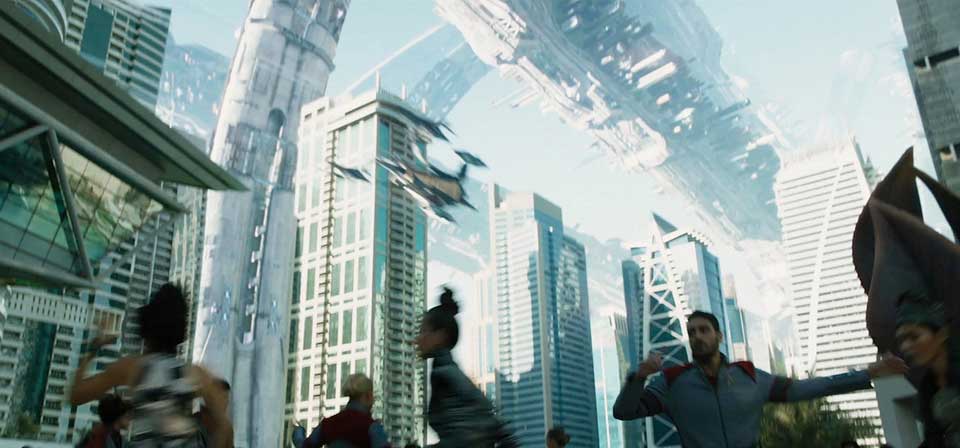Search Results
219 records found
Spy Kids 2: Island of Lost Dreams (2002)
In the original Spy Kids, dashing spy parents Gregorio and Ingrid Cortez (Antonio Banderas and Carla Guigino) exchanged the glamorous world of espionage for the even greater adventure of raising a family. Their children Carmen and Juni (Alexa Vega and Daryl Sabara) weren’t actually "Spy Kids" — a term that in the movie actually applied to a line of robotic child warriors designed by the only somewhat sinister Fegan Floop (Alan Cumming) — but became entangled in their parents’ exotic former life when the latter were captured by Floop’s forces.
Spy Kids 3-D: Game Over (2003)
If Spy Kids 3-D: Game Over were consistent, that protest would become Juni’s mantra, repeated every thirty seconds or so from that point on until the end of the film. Then again, if Spy Kids 3-D were consistent — about anything at all — it might actually start making some kind of sense.
St. Joseph Gets His Due: The Nativity Story Through the Eyes of Jesus’ Foster Father
Although The Nativity Story doesn’t portray Joseph as a widower, it also doesn’t depict Joseph and Mary’s relationship as a typical first-century Jewish courtship. While the film doesn’t take a stance one way or the other on the Catholic doctrine of Mary’s perpetual virginity, it finds drama in the obstacles between Joseph and Mary, rather than turning their story, as some retellings have done, into a Hollywood romance.

St. Vincent (2014)
When a Hollywood comedy pairs a dissolute, misanthropic curmudgeon with a cute young kid, you expect a story of redemption — particularly when the movie is called St. Vincent, and the curmudgeon’s name is Vincent. When the curmudgeon played by Bill Murray, it’s a done deal.
Stagecoach (1939)
Stagecoach is not the greatest Western of all time, but has been called the first great Western, and played a key role in the status of the Western as the quintessential American genre.
Stalag 17 (1953)
Grimly hilarious, subversive and defiant, rough around the edges, and more than a little sad, Billy Wilder’s Stalag 17 may have been the inspiration for TV’s “Hogan’s Heroes,” but this is no campy farce.

The Star (2017)
It’s a little like The Nativity Story meets The Secret Life of Pets, which probably sounds like a winning formula to some people.
![A Star Is Born [video]](/uploads/articles/starisborn.jpeg)
A Star Is Born [video] (2018)
So Bradley Cooper can direct and sing as well as act, and Lady Gaga can act as well as sing. The music is solid and sometimes excellent, but does Hollywood’s fourth take on this story have anything new to say?
Star Trek (2009)
And so, for the first time in forever, we have Star Trek really and truly boldly going where we haven’t been before — taking Kirk, Spock, Bones, Uhura, Scotty, Sulu and Checkov on a brand-new adventure for the very first time. Before you know it, you’re getting to know old friends in an entirely new light. It’s like what Alan Moore said about Frank Miller’s The Dark Knight Returns: “Everything is exactly the same, except for the fact that it’s all completely different.”

Star Trek Beyond (2016)
It’s not saying much, but Star Trek Beyond is probably this summer’s most entertaining popcorn film to date.
Star Trek II: The Wrath of Khan (1982)
One of the strongest and most popular entries in the Star Trek film franchise, The Wrath of Khan has everything you could ask for in a good sci‑fi action-adventure film: sympathetic, well-drawn heroes, a terrific villain (Ricardo Montalban as Khan), exciting outer-space showdowns, sci‑fi wow factor (the Genesis effect), and a touch of reflective depth (the Enterprise crew finally faces up to age and mortality, and questions about the wisdom and consequences of playing God are hinted at).
Star Trek II: The Wrath of Khan (1982)
(Review by Jimmy Akin) Khan stood above the crowd of crass, original series Klingon captains, Star Fleet officers gone bad, and assorted alien malefactors. He was something different. Strong. Mysterious. Charismatic.
Star Trek III: The Search for Spock (1984)
The Search for Spock may be the unappreciated middle child of the Trek franchise, but it’s still one of better and more indispensable episodes.
Star Trek Into Darkness (2013)
Star Trek Into Darkness outdoes its predecessor in most respects, except creative ambition.
Star Trek IV: The Voyage Home (1986)
With its time-traveling setting in the familiar milieu of the mid-1980s and its crowd-pleasing celebration of whales and conservationism, Star Trek IV: The Voyage Home is the most successful and widely appealing of the Star Trek films, and also the most idiosyncratic.
Star Trek VI: The Undiscovered Country (1991)
The original Trek crew’s real last hurrah, Star Trek VI: The Undiscovered Country is a rousing sendoff for Kirk, Spock, and Bones, and a fitting transition from the original series’ Cold-War milieu to the Next-Generation age of engagement.
Star Trek: Nemesis (2002)
(Written by Jimmy Akin) The main cast is no longer trapped in amber — never changing their relationships, never getting promoted, never leaving the Enterprise. They’ve become unstuck. It’s a sign of things to come.
Star Wars [Episode IV – A New Hope] (1977)
An orphaned hero. An imprisoned princess. A wise old hermit. A magic sword. A fearsome dark lord. Such conventions are the stuff of myth and romance — yet, inexplicably, the first Hollywood film to give these mythic archetypes their due was not some Arthurian romance or epic costume drama.
Star Wars [Episode IV – A New Hope] (1977)
(Review by Jimmy Akin) Like earlier pulp films, Star Wars draws on mythic and fairy-tale archetypes: a young orphan-hero; a mysterious wizard-mentor; a fearsome dark lord; a magical sword; a princess held prisoner; a gallant rescue mission. Yet on a deeper level, Star Wars is more convincing as a myth or fairy tale in its own right.
Star Wars: Episode I - The Phantom Menace (1999)
It’s not just that the banter and camaraderie of Luke and Han and Leia was so much more fun than the often wearying interactions of Anakin and Amidala and young Obi-Wan — though that’s part of it. More importantly, the stories themselves largely lack the strong center of good versus evil that was the heart of the original trilogy.
Recent
Home Video
Copyright © 2000– Steven D. Greydanus. All rights reserved.